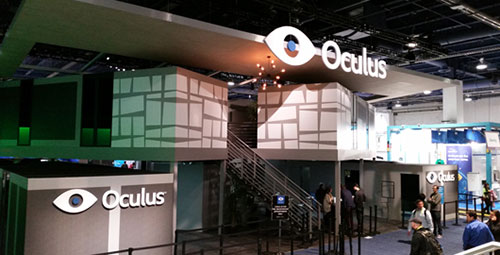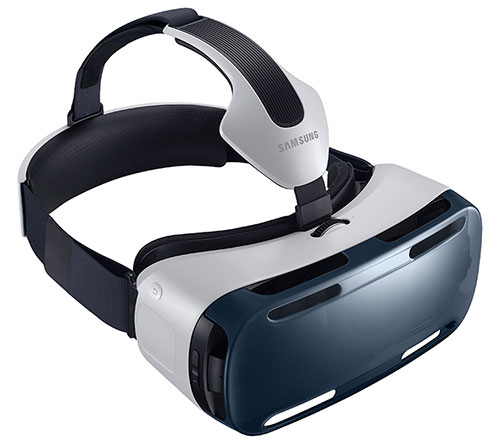Samsung this week unveiled its Milk VR platform for its Gear VR headset at the 2015 International CES in Las Vegas, but it was far from alone in ramping up the virtual reality action at the show. HP introduced the Zvr Virtual Reality Display, and Razer rolled out its Android-based OSVR. Not to be outdone by these upstart efforts, Oculus gave a peak at its Rift controller.
Meanwhile, 3DHead, which is the product of Alki David’s Anakando Media Group, made its official debut. It has been dubbed the “Oculus Rift Killer.”
It seems that 2015 could be theyear that virtual reality gets real — at least for those willing to dealwith a technology that is still very much in the development stage.
“It is ready for early adopters,” said Jim McGregor, principal analystat Tirias Research.
“While it can definitely get better, the current generation ofproducts like the Oculus Rift do provide a good user experience,”he told TechNewsWorld.
This technology could have potential applications not only in gaming, but also inindustrial design and service applications, McGregor noted, but “with that said, this will not translate into high-unit shipments. This is and will remain a niche for the foreseeable future.”
Hardware Makes Its Debut
Despite the fact that the technology likely has a long roadahead, the 2015 CES could be the point when true VR technology entersthe mainstream market. Oculus Rift led the way throughout 2014,but this week the VR pioneer, now owned by Facebook,was just one of several companies making real progress in the virtualspace.
Samsung announced at CES that Milk Video will make its way to Samsung Smart TVs and PCs via its Milk VR service, the content delivery system for its own Gear VR. While thistechnology reportedly will be compatible with Oculus, there could be arift of another sort in the future.
On the show floor, “Oculus Rift was the most visible, but Samsung hadwhat appeared to be the best implementation, using Qualcomm coretechnology,” said Rob Enderle, principal analyst at the Enderle Group.

“There were also number of smaller vendors showcasing in and aroundthe show, but it looks like the high-resolution cellphone adapted to aheadset is the best and most cost-effective path to this, and now we arewaiting for the compelling content that will drive people to buy thehardware,” Enderle told TechNewsWorld. “I wouldn’t expect much beforethe end of the year, but it feels that close.”
The Rift Killers
While Samsung and Oculus Rift may have the early edge, 3DHeadintroduced its own headset display, which uses exclusively licensedtechnology that originally was patented for the GCS3GameCaster. As apro tool, it can be used as a headset or handset indeveloping virtual worlds for gaming or filmmaking.
The consumer version of the 3DHead can be used with existing games,including those on the PC as well as hardware-based consoles, makingit a technology that can used right out of the box.
Other devices unveiled at CES weren’t quite as immersing. HP’s newlyunveiled Zvr Virtual Reality Display won’t provide the total immersionof either the Samsung or Oculus headset, but this new 25-inch HDdisplay could garner renewed interest in 3D-display technology.
Unlike active 3D HDTV displays that debuted at CES a few years ago — to muchfanfare but few sales — the HP system utilizes a passive 3D screen withhead-tracking via multiple cameras and lightweight glasses. Thistechnology could be more of a creation rather than consumption tool,but it is one area where VR could become very real very soon.
These various displays can allow users to “see” a virtual world, butit is the Virtuix Omni that could provide movement within the virtualspace. The company, which also made its debut at CES after asuccessful Kickstarter campaign in 2014, developed a combinationgaming platform/controller that truly could get gamers off the couch.
Over the course of three years, the Omni has been gone from the designstage through prototypes and is nearly ready commercial release. Itutilizes a concave platform that enables a smooth, natural gait and animmersive walking and running motion. For some gamers, that mightpromise to be a little “too real.”
Game On or Not
VR technology is clearly on the forefront of becoming the next bigthing, but there are still plenty of questions about its practical applications. 21stCentury Fox used this week’s CES to demonstrate immersing clips thatallow the viewer to feel as if they’re in the middle of the story they’re seeing rather than watching it on a flat screen.
At CES gaming hardware maker Razer and VR technology developer Sensicsannounced their combined effort to standardize virtual realitydevelopment as the “Open Source Virtual Reality (OSVR) platform. Thateffort could help ensure that competing technologies don’t derailprogress.
Despite these efforts, the VR bandwagon is rolling in fits and starts.
“VR is not yet ready for prime time,” said Joost van Dreunen,cofounder of Super Data Research.
“From a gaming perspective, neither Sony nor Microsoft have madeannouncements at CES this year, which says that two of the mostimportant players in the games industry are still quite a ways outfrom show time,” he told TechNewsWorld.
“More likely, we’ll hear from them in the summer around E3,” vanDreunen added. “2015 will be the year when the VR space heats up.We’re seeing an increasing amount of investment — not just in head-mounted displays, but also in different user input devices and specialized 3D content engines.”
OSVR could thus be a potential game changer said van Dreunen.
“Generally, the Android version of a platform presents a feasiblealternative once a fancier, more expensive device has proven the casethat there exists a viable market,” he noted. “I like Razer’s gusto ingetting this out, but from a market perspective it seems premature.”























































Am I the only one that has absolutely zero desire for 3D TVs and virtual reality? I’ve been gaming for over 30 years and stay on top of tech and even do 3D modeling for game-ready assets, but I just can’t see myself bothering with all of this mess they keep trying to convince us we want. I don’t and never will. Sorry to sound negative, but I would rather they concentrate on phones that improve the clarity of calls I make, or TVs that can consolidate the myriad of devices I have (yes, I know they’ve been trying to do that for years now). Just stop wasting efforts on these toys that I can only imagine a few people really wanting to own.